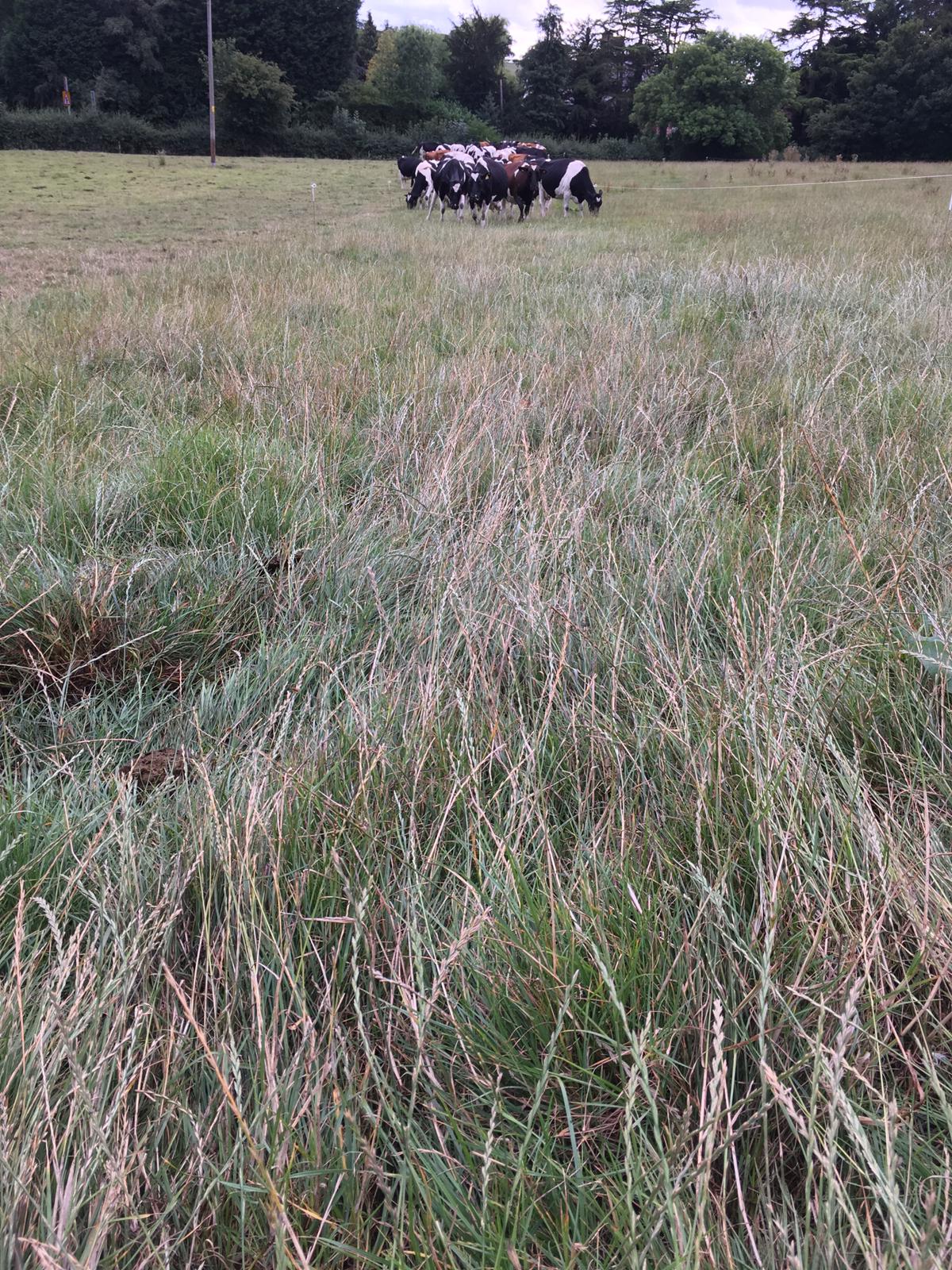- Home
- Knowledge library
- Standing hay – good timing or good luck?
Standing hay – good timing or good luck?
To be a successful dry cow feed that doubles up as a calving paddock, standing hay needs careful planning. It should be a quality grass that has been part of the platform rotation and allowed to go to seed. Yet experienced autumn-block calving herds will have learned the hard way that a wet summer leads to green re-growth, a dry one lacks bulk to fully feed cows, while overtight stocking increases mastitis rates.
Growing good-quality roughage to strip graze is very dependent on rainfall, warns LIC consultant Piers Badnell. “In areas with higher rainfall, or a wet summer, new shoots come through the standing hay which results in lush grass and effectively a standing silage crop. In 2017, herds in the west saw more milk fever cases as a result of grazing this,” he explains.
Image: Cows grazing a herbal ley standing hay on FFK Sussex contributor farm summer 2018.
The standard recommendation is to grow selected paddocks for 6-8 weeks and graze them for 6-8 weeks, but budgeting this feed is difficult, admits Piers. Without correct allocation, the result can be dead and decaying foggage which is clearly unpalatable. “You need the hay to be more like ryegrass seed hay that’s spent – so it provides good-quality roughage and not a lot else – with a cover of around 4,000 kg DM/ha, plus some dry cow rolls. Budgeting becomes a bit of an educated guess, just don’t lock up too much and be flexible with it,” he says.
“It might be better for some farms to make mature silage from these paddocks to feed dry cows. Cost it out thoroughly: growing and grazing standing hay and being able to calve outside, compared with feeding silage in a shed or as a supplement to standing hay. Or think of feeding something else.”
Choosing paddocks close to the parlour for convenience makes sense, however, Piers says that overuse can lead to P and K issues due to cow camping, plus mastitis which is why rotation and back fencing are crucial. He also points out that a cost/benefit analysis is important because re-growth on standing hay paddocks is slow – it can halve annual production due to the amount of time the sward is locked up for growing and grazing. FFK contributor Keith Davis agrees it’s a lot of ground to close up for a long period, but says demand drops off as cows calve and intakes are lower anyway. “Recovery is slow, but it doesn’t matter because paddocks aren’t needed again in autumn and are fine by spring. We grow it as a way into a reseed on a poor-quality field, graze it, then burn it off and re-sow with a perennial ryegrass,” he says.
Keith uses standing hay at home for his 120 autumn block-calving Holsteins, averaging 10,300 kg, following experience at Lydney Park when it was still autumn calving. “At Lydney, we had no problems moving the fence 3-5m/day and cows calved on the grazed sward which was clean, not contaminated. We back fenced to stop them walking over it when it was wet and muddy and to prevent mastitis issues.
“At home we have two sections and know our grazing paddocks need to be shut up in June to produce a fibrous forage. The second one closed on the 10 July last year and never grew a seedhead. Instead, we got leafy grass and had a few milk fever cases. Grass needs to be shut up in May/June for August/September calving,” he says.
“To budget, I work on a five-year average growth to calculate the amount of ground needed. If you get a drought, you have to buy in hay – you can’t shut up too much land just in case of drought.”

Image: Dry cows being turned into Standing Hay on FFK Cheshire contributor farm last year in 2018.
Topics:
Sectors:
Tags:


